An Artist's Thorny Path to the Heights: Per Krohg's Ceiling Paintings at Kunstnernes Hus
History of art student at UiO Nils Henrik Nedregård has written about Per Krohg's ceiling paintings in Kunstnernes Hus.
Published
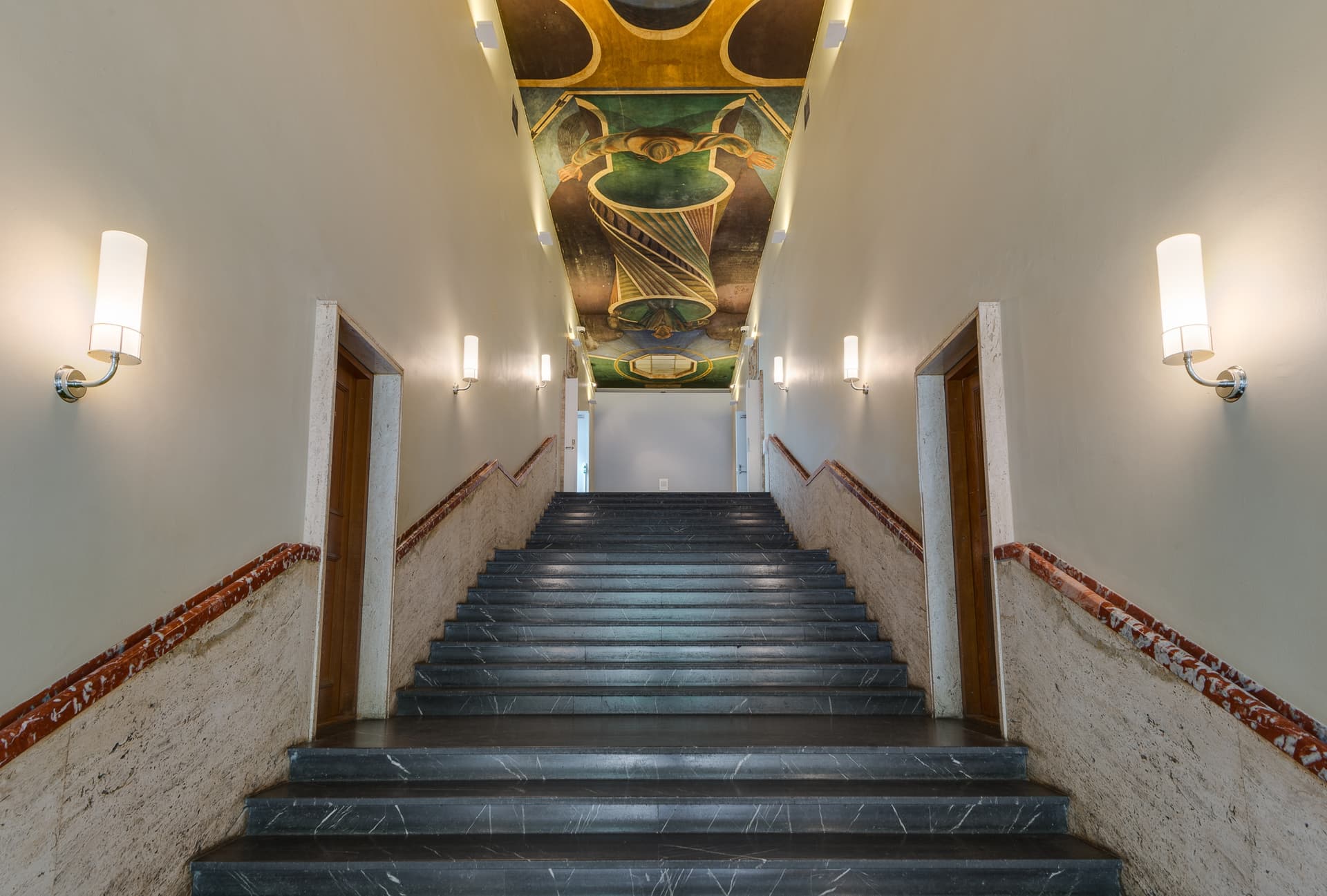
Have you ever looked up the stairwell at Kunstnernes Hus? Then you may have noticed Per Krohg's magnificent 1932 frescoes, which stretch a full 22 meters above the ceiling. Krohg himself explained the work as an image for artists and for people close to art (Tidens Tegn, September 29, 1931). When he was commissioned to decorate Kunstnernes Hus, he chose an idea for a motif that had followed him ever since he first started painting, which he referred to as the artist's thorny path to the heights. To illustrate this idea, he paints a narrative at Kunstnernes Hus that extends across three fields: Anatomy, then Truth, Lies and Illusion, and finally the Tunnel of Reflection. Together they constitute Krohgs' vision of the artist's life.
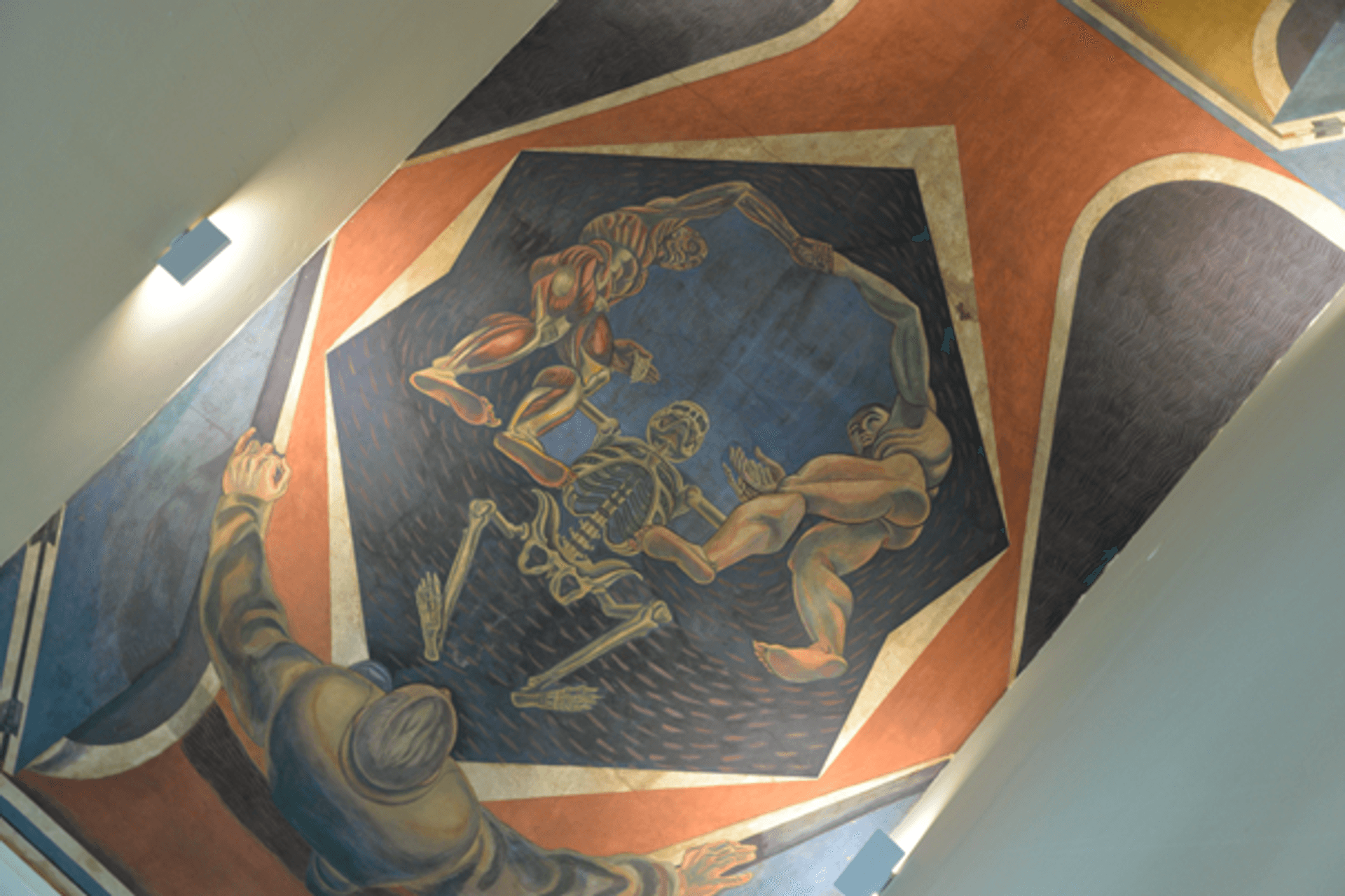
In Krohgs ceiling painting, the artist is portrayed as a young man, who for each field steps through a new door to a new stage in his journey. It all begins with Anatomy, where the artist faces his first challenge. He is faced with three figures in a ring dance; a perfect human being, a human being reduced to his muscles and a skeleton. At the inauguration of the fresco, Krohg explained this as an image of the artist's education, the development from the skeleton in the beginning to the complete human body of flesh and blood. The artist's first step on the journey is education.
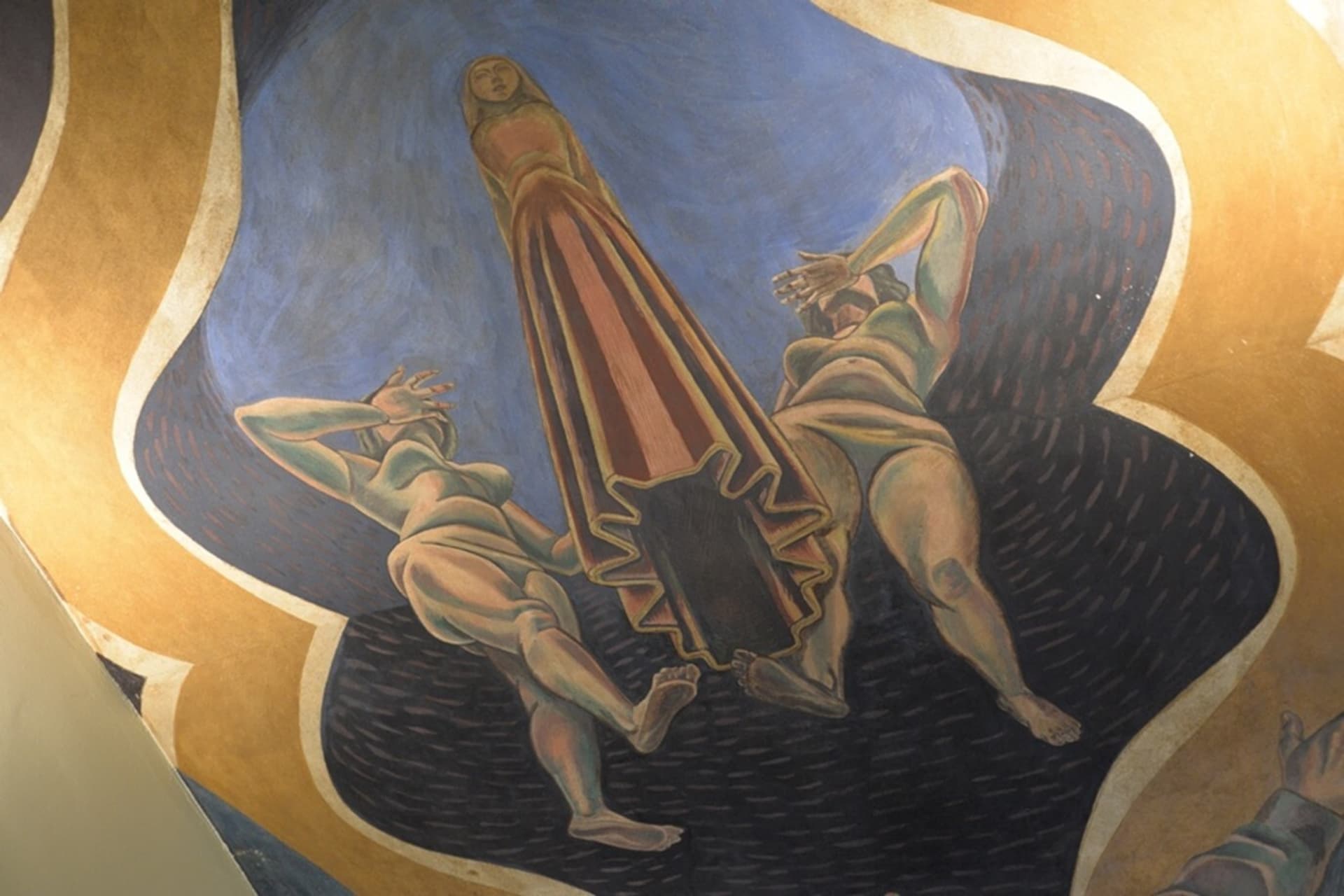
This is followed by The Truth, The Lie and The Illusion, in which the artist is confronted by three further figures. At the center is an empty shell – dress, mask and hair, but no body – of a human being. Krohg explains this as an image of the illusion. The illusion is flanked and presented by two personifications of the opposites truth and lies, which Krohg has depicted as two women each holding a hand to their face. A point has been made that it is difficult to distinguish between the truth and the lie, and together they constitute the illusion. In this field, the artist is faced with questions about the perception of reality.
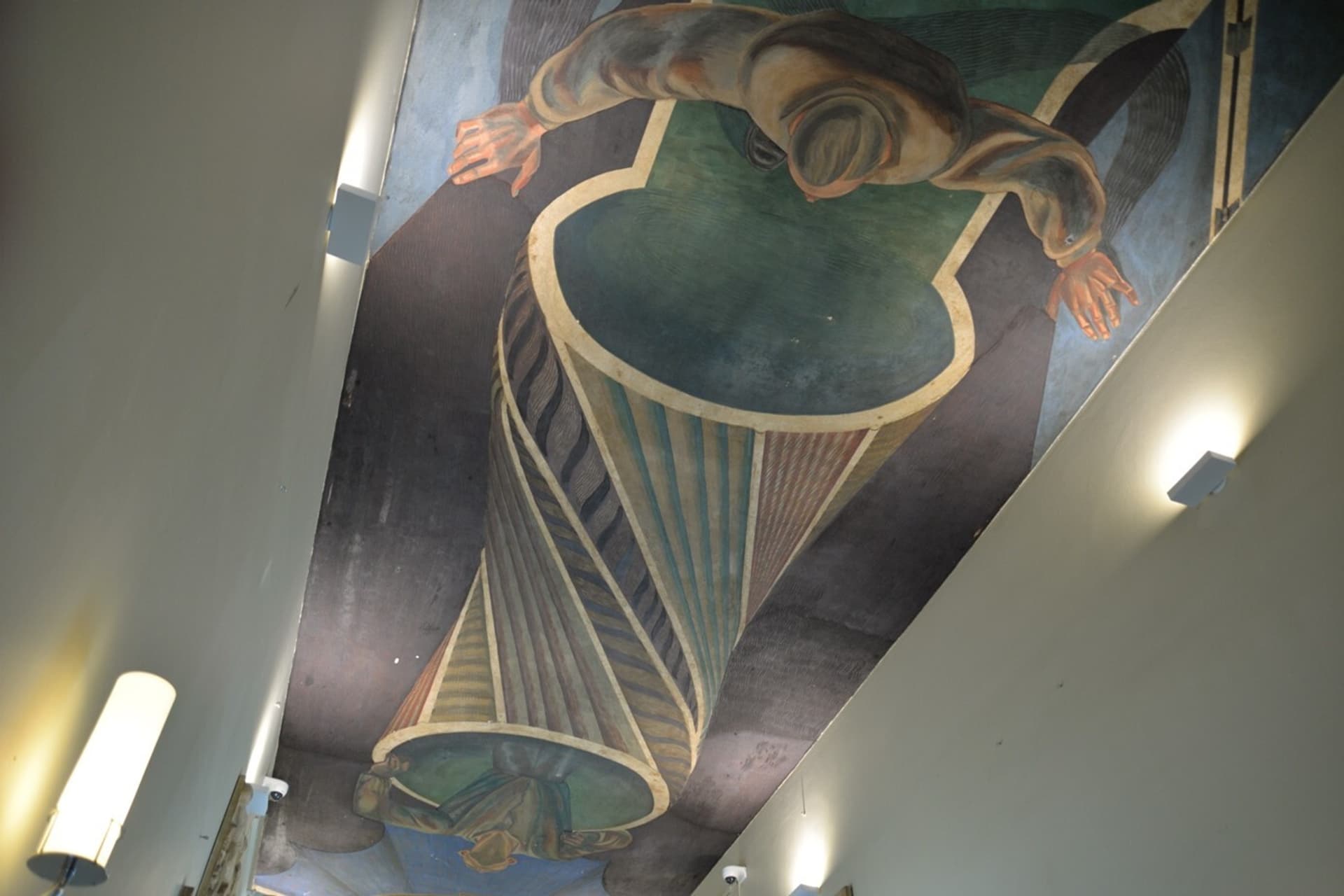
It all ends – and begins again – when the artist reaches the last door in the Tunnel of Reflection, where the artist undergoes a process depicted as a tunnel. It ends with him reaching the light, the final realization: that the journey has reached its end and must begin again. This is depicted with the snake biting its own tail, as a symbol of eternity. With this, the artist has reached the end of his journey and must begin again from where he started. This is the artist's life in Krohg's eyes.
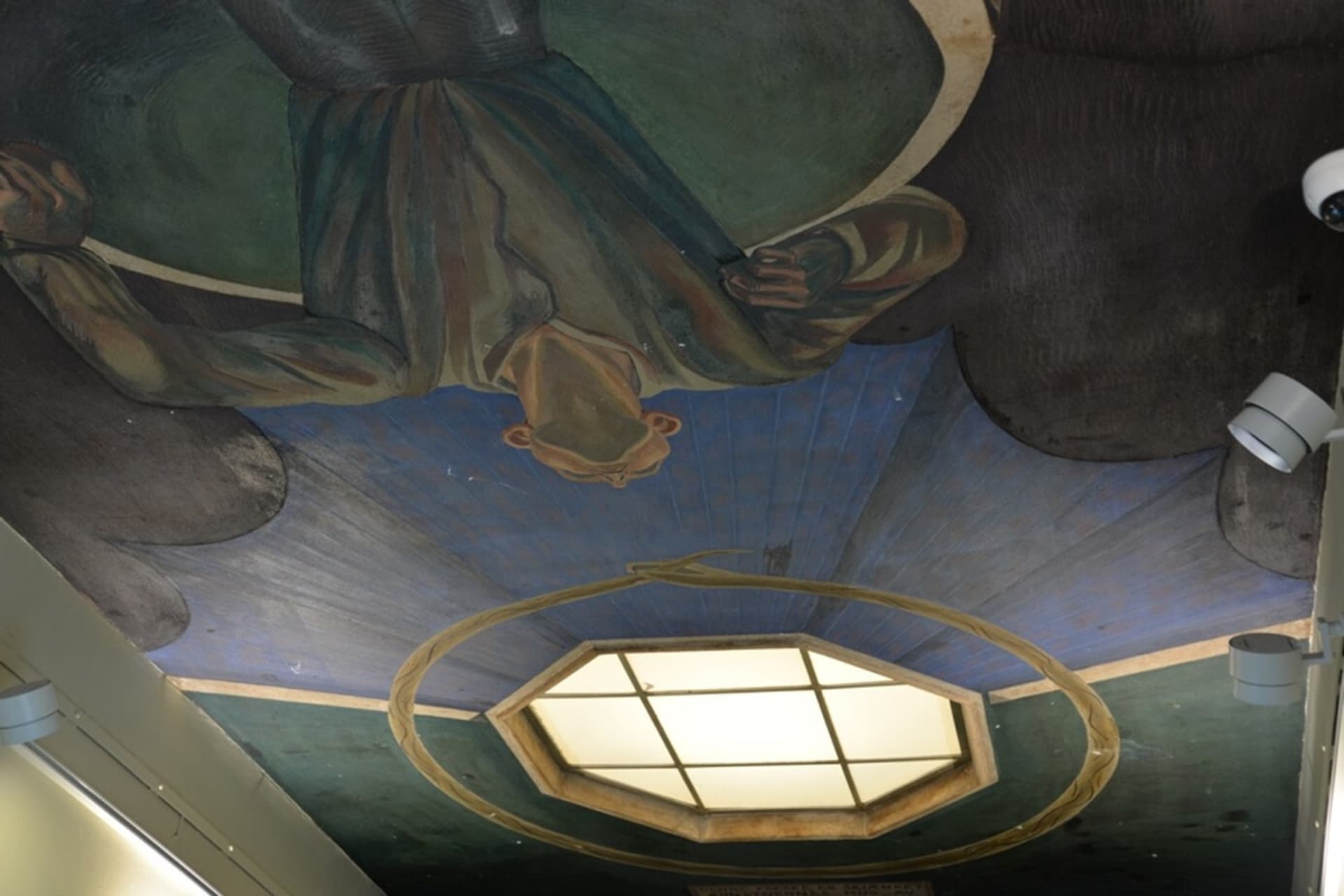
Krohg's fresco depicts the artist's life as an eternal, repetitive process that results in the artist getting no further than where it started. About the subject he said: “Such is the life of an artist. And that's what I've found I should portray in this very house. Always difficulties, always stamping in the same place. No result.” (Tidens Tegn, October 14, 1932) This way of thinking can be linked to the myth of the artistic genius, an outdated idea of the male, often troubled but gifted artist who reaches the heights against all odds – a notion that was widespread in Krohgs' time.
In a broader context, Krohgs' frescoes are part of what art historian Jan Askeland referred to as Norway's fresco epoch. This was a period from 1918-1950 that saw a flourishing of frescoes in public buildings. In addition to Kunstnernes Hus, the frescoes in Oslo City Hall, the Seamen's School in Oslo and the National Library of Norway are in line with this period. In this sense, the ceiling painting in Kunstnernes Hus is an important historical document for Norway's colorful art history.
Krohg's ceiling paintings have adorned Kunstnernes Hus since 1932, and are among the many gems of Kunstnernes Hus that are worth preserving. If you would like to help preserve this historic building, you can support the rehabilitation initiative using the hashtag #HusetVårt.